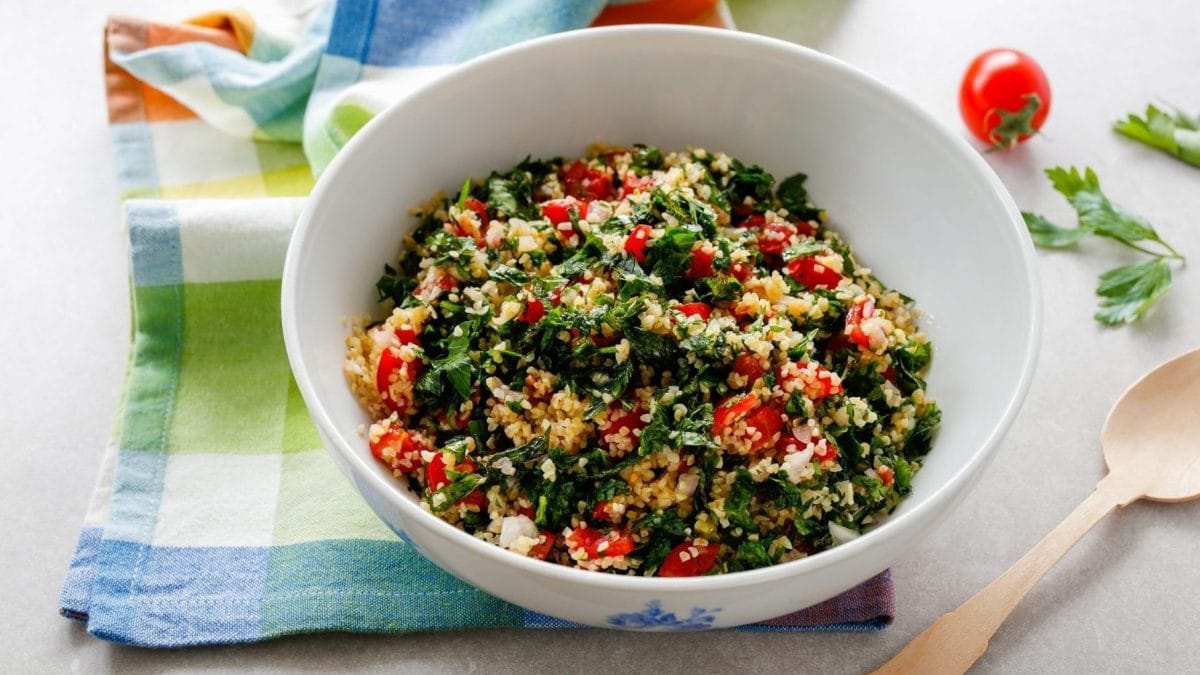
Tabbouleh is a fresh and fragrant Lebanese dish, typical of Middle Eastern countries: a salad made with bulgur, vegetables and aromatic herbs, simple, quick and perfect for the summer season. First, you have to soak the bulgur in hot water for an hour, then drain it and then flavor it with cherry tomatoes, onion, parsley and mint, chopped very finely with a knife and added raw. The dish is then seasoned with lemon juice and extra virgin olive oil, for a satisfying and light final result, also excellent for those who follow a vegan diet.
What is a Tabbouleh? Where Did Tabbouleh Originate?
Tabbouleh is a traditional Levantine salad that originated in the mountains of Lebanon and Syria, where it has been a staple of Middle Eastern cuisine for centuries. Made primarily from finely chopped parsley, bulgur wheat, tomatoes, mint, and seasoned with olive oil and lemon juice, tabbouleh is celebrated for its fresh, vibrant flavors and health benefits. Historically, it was a dish enjoyed by rural communities as a light, refreshing meal during the hot Mediterranean summers. Tabbouleh’s popularity spread beyond the Middle East through immigration and cultural exchange, eventually reaching the United States with waves of Lebanese and Syrian immigrants in the late 19th and early 20th centuries. Today, it has become a beloved dish across the U.S., widely appreciated for its nutritious ingredients and bright taste, often featured in Mediterranean and health-conscious cuisine.
How to Pronounce Tabbouleh
The English pronunciation of tabbouleh is typically said as "TAB-oo-lay" or "TAB-oo-li."
Pro Tips for The Best Tabbouleh
- Since parsley is the main ingredient, opt for fresh, vibrant green flat-leaf parsley for the best flavor and color.
- Use fine bulgur and soak it briefly in cold water or lemon juice instead of boiling to keep it light and fluffy.
- Allow tabbouleh to rest for at least 30 minutes in the fridge before serving so the flavors can meld together beautifully.
- Mint adds a refreshing note but can overpower the dish if overused, so add it in moderation.
What Are The Main Ingredients in a Tabbouleh?
The main ingredients in tabbouleh are:
- Fresh parsley (the star ingredient, finely chopped)
- Bulgur wheat (usually fine bulgur, soaked but not cooked)
- Tomatoes (diced)
- Fresh mint leaves (finely chopped)
- Onion (often green onions or regular onions, finely chopped)
- Lemon juice (for a bright, tangy flavor)
- Olive oil (adds richness and smoothness)
- Salt and pepper (to taste)
Can I Add Any Other Ingredients?
To make your tabbouleh richer, you can also add other vegetables, such as cucumbers and peppers, but also olives, dried tomatoes, almonds or fresh basil. If you don't have bulgur, you can use couscous, which is more easily available, or quinoa for a gluten-free variant suitable for everyone.
Tabbouleh Vs. Tabouli
Tabbouleh and tabouli are two spellings of the same traditional Levantine salad made with parsley, bulgur wheat, tomatoes, and fresh herbs. The difference in spelling mainly comes down to regional and linguistic variations—tabbouleh is the more common spelling in Arabic-speaking countries and many Western countries, while tabouli is often used in the United States, especially in Lebanese-American communities.
What Can I Eat Tabbouleh With?
Tabbouleh is incredibly versatile and pairs well with a variety of dishes. It’s commonly served as part of a mezze platter alongside hummus, baba ganoush, and pita bread. You can enjoy tabbouleh as a refreshing side to grilled meats like chicken, lamb, or beef kebabs.
It also complements falafel beautifully and works well as a light salad alongside heavier dishes like stuffed grape leaves (dolmas) or roasted vegetables. Additionally, tabbouleh can be served on its own as a nutritious, light meal or used as a vibrant topping for wraps and sandwiches to add freshness and crunch.
How Can I Serve Tabbouleh?
Tabbouleh is traditionally part of the meze (a Turkish word meaning "taste, "flavour", "seasoning"), a selection of appetizers served at the beginning of the meal, before the main courses. You can serve it, therefore, at the beginning of a special dinner, as a tasty aperitif, but also as a filling and nutritious first course.
Can I Make It Ahead of Time?
Yes, you can definitely make tabbouleh ahead of time! In fact, preparing it a few hours before serving—or even the day before—helps the flavors meld together beautifully, making the salad taste even better. However, to keep the parsley crisp and vibrant, it’s best to avoid making it too far in advance—ideally no more than 24 hours ahead.
Does it Freeze Well?
Tabbouleh doesn’t freeze well because its main ingredients—fresh parsley, tomatoes, and lemon juice—tend to lose their texture and become mushy when thawed. The fresh herbs especially can turn wilted and watery after freezing.
How to Store Lebanese Tabbouleh
To store leftover tabbouleh, place it in an airtight container and keep it refrigerated. It’s best to consume leftovers within 1 to 2 days to enjoy the freshest flavor and maintain the crisp texture of the parsley and vegetables.
Before serving, give it a good stir and, if needed, add a splash of fresh lemon juice or olive oil to brighten the flavors. Avoid storing tabbouleh at room temperature for long periods, as the fresh ingredients can wilt and lose their vibrancy quickly.
Ingredients
How to Make Lebanese Tabbouleh
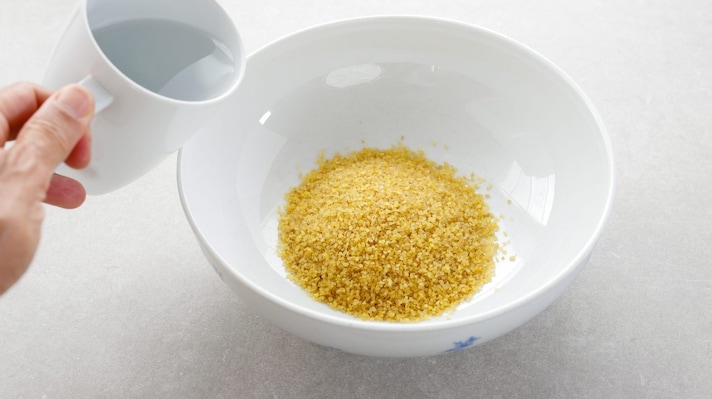
Collect the bulgur in a bowl.
Collect the bulgur in a bowl.
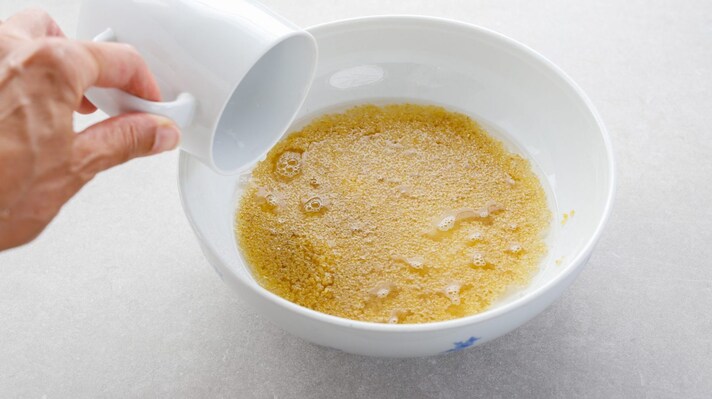
Pour enough hot water to cover it and let it rest for an hour.
Pour enough hot water to cover it and let it rest for an hour.
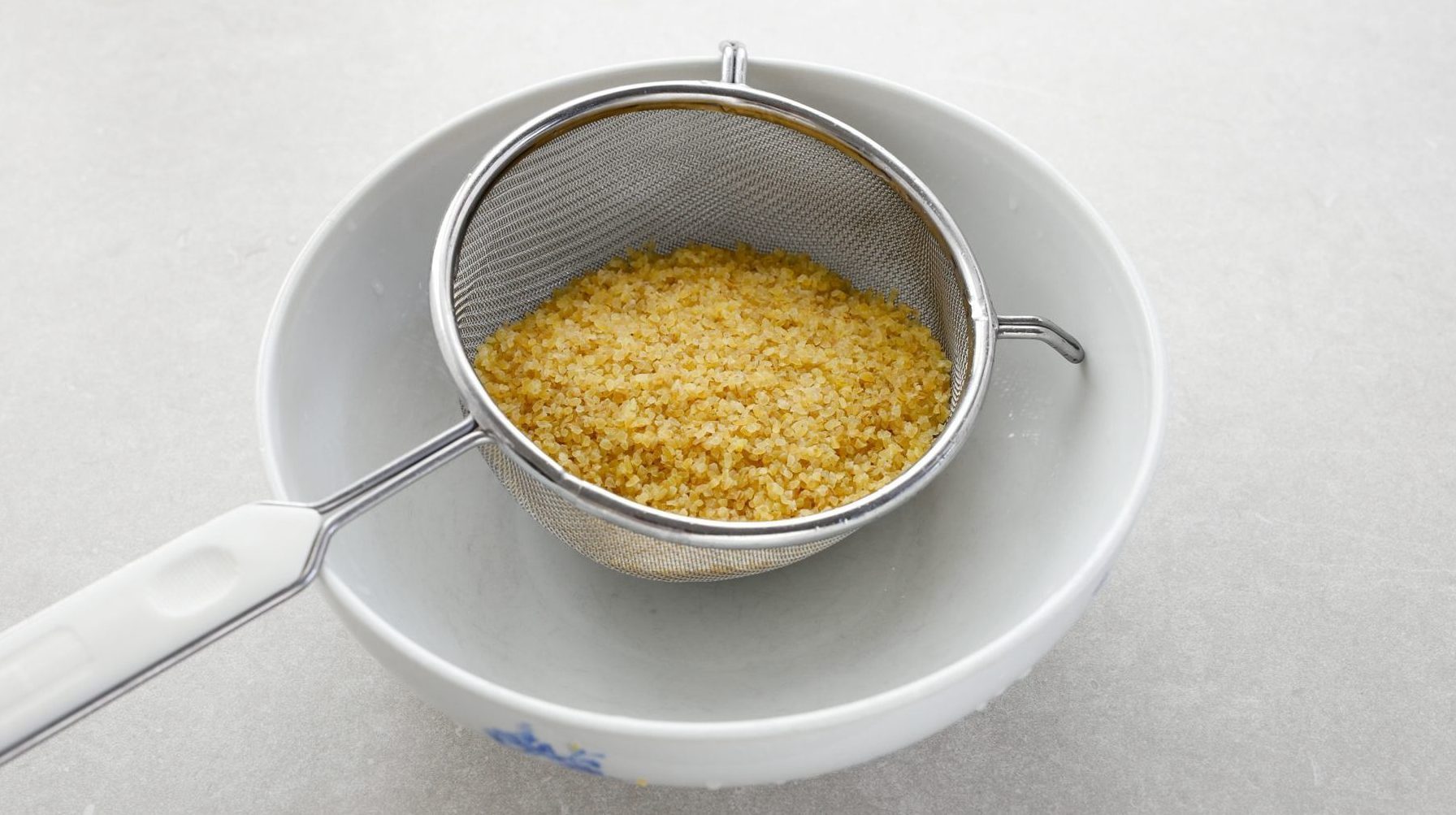;Resize,width=712;)
Drain the bulgur with a sieve.
Drain the bulgur with a sieve.
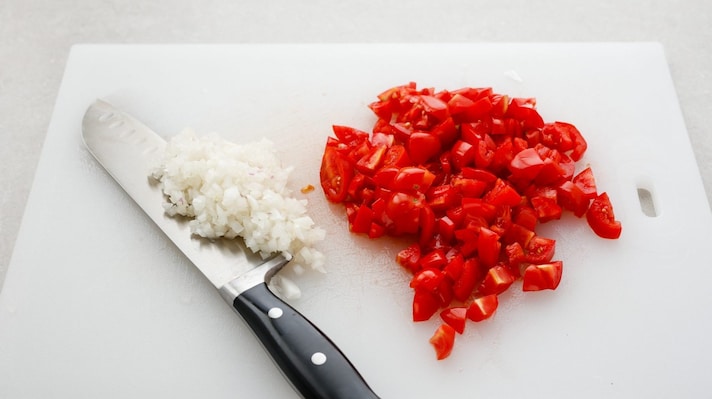
Finely chop the onion and dice the tomatoes.
Finely chop the onion and dice the tomatoes.
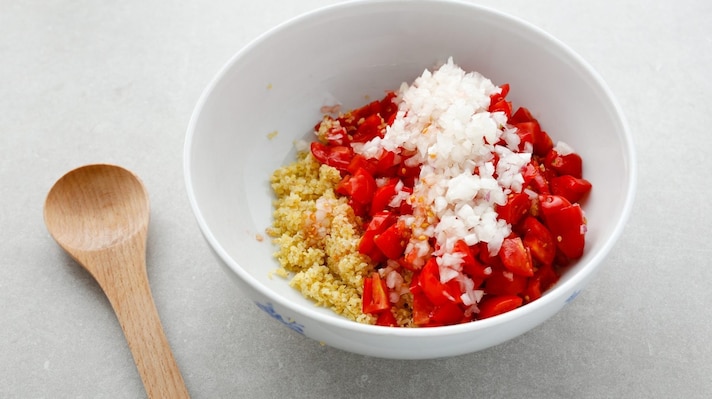
Transfer bulgur, onion and cherry tomatoes to a bowl.
Transfer bulgur, onion and cherry tomatoes to a bowl.
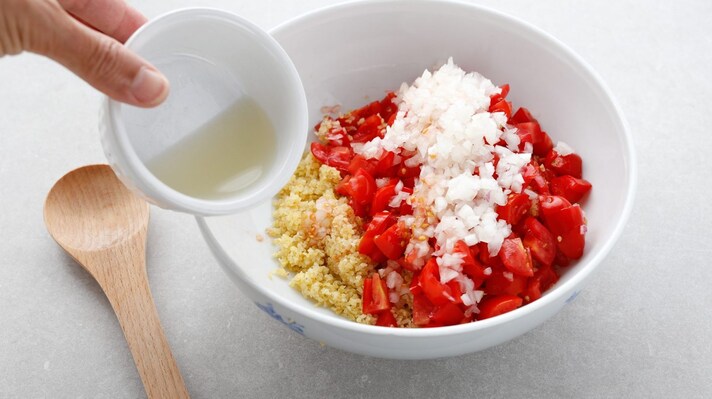
Add the lemon juice and season with a pinch of salt.
Add the lemon juice and season with a pinch of salt.
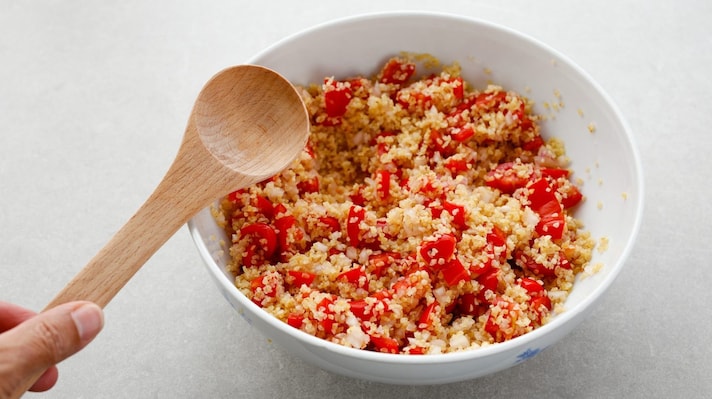
Mix carefully.
Mix carefully.
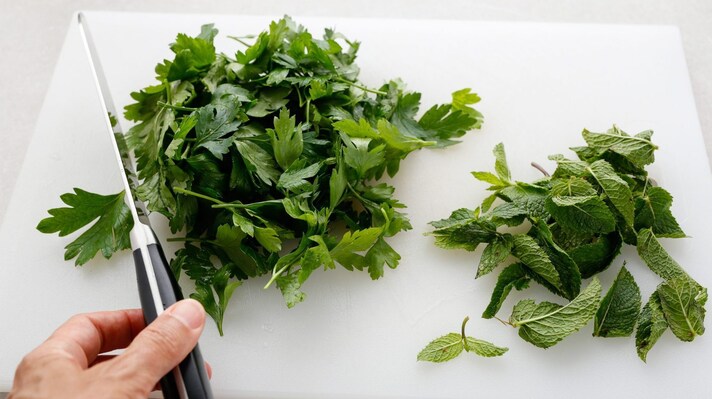
Wash the parsley and mint, pat them dry with kitchen paper and place them on a cutting board.
Wash the parsley and mint, pat them dry with kitchen paper and place them on a cutting board.
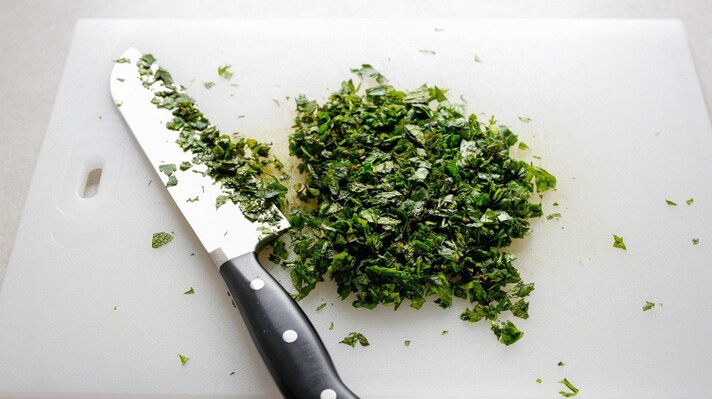
Chop them finely with a knife.
Chop them finely with a knife.
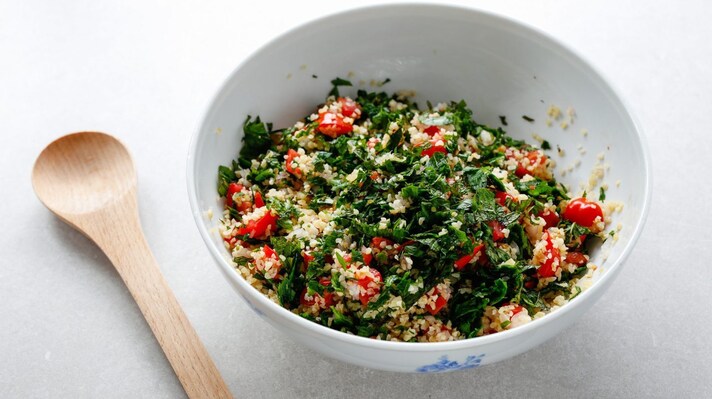
Add the chopped herbs to the bowl along with the other ingredients and mix well.
Add the chopped herbs to the bowl along with the other ingredients and mix well.
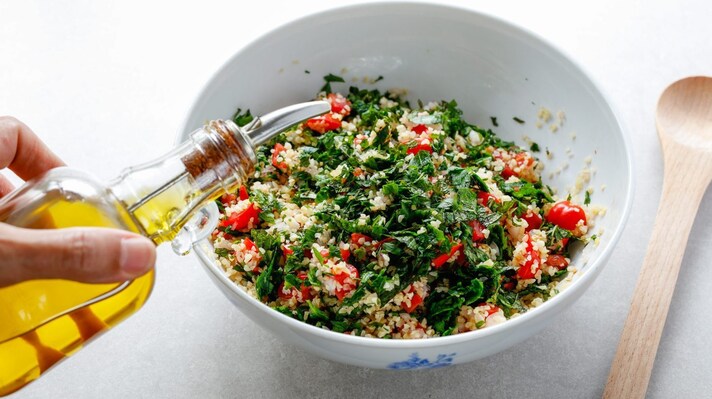
Pour the oil and mix all the ingredients well. Let it rest for at least an hour in the fridge before serving.
Pour the oil and mix all the ingredients well. Let it rest for at least an hour in the fridge before serving.
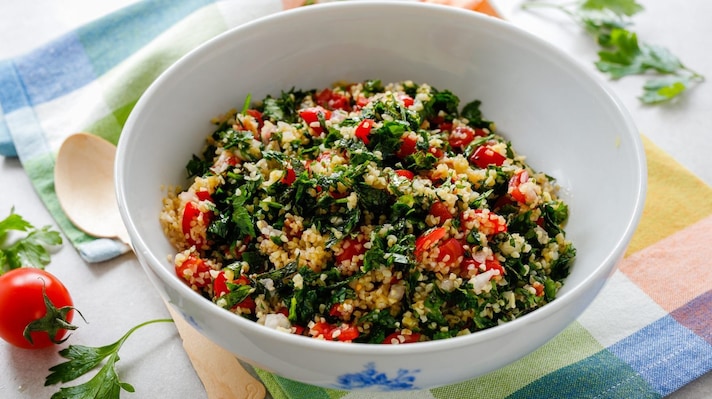
Enjoy!
Enjoy!
;Resize,width=767;)
